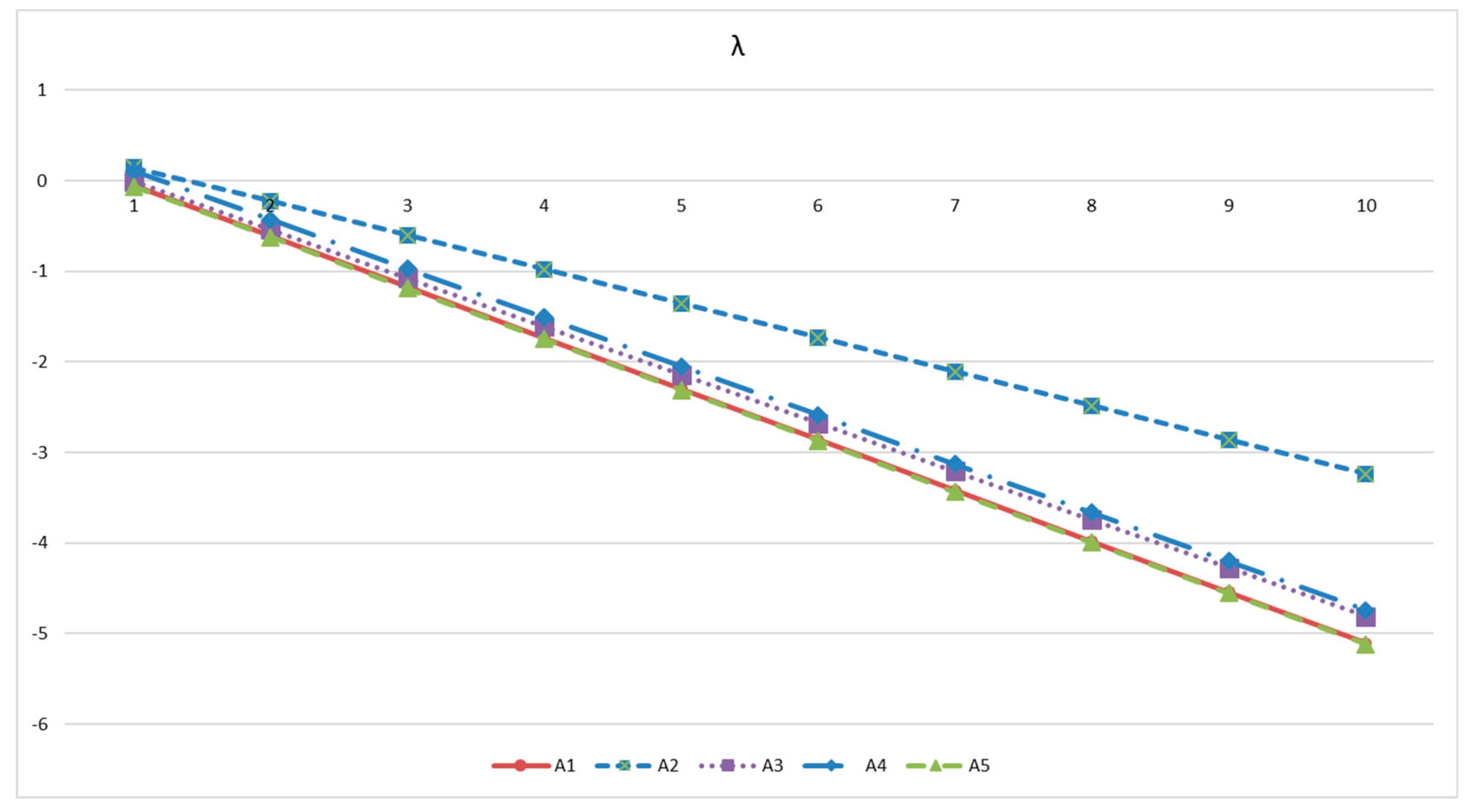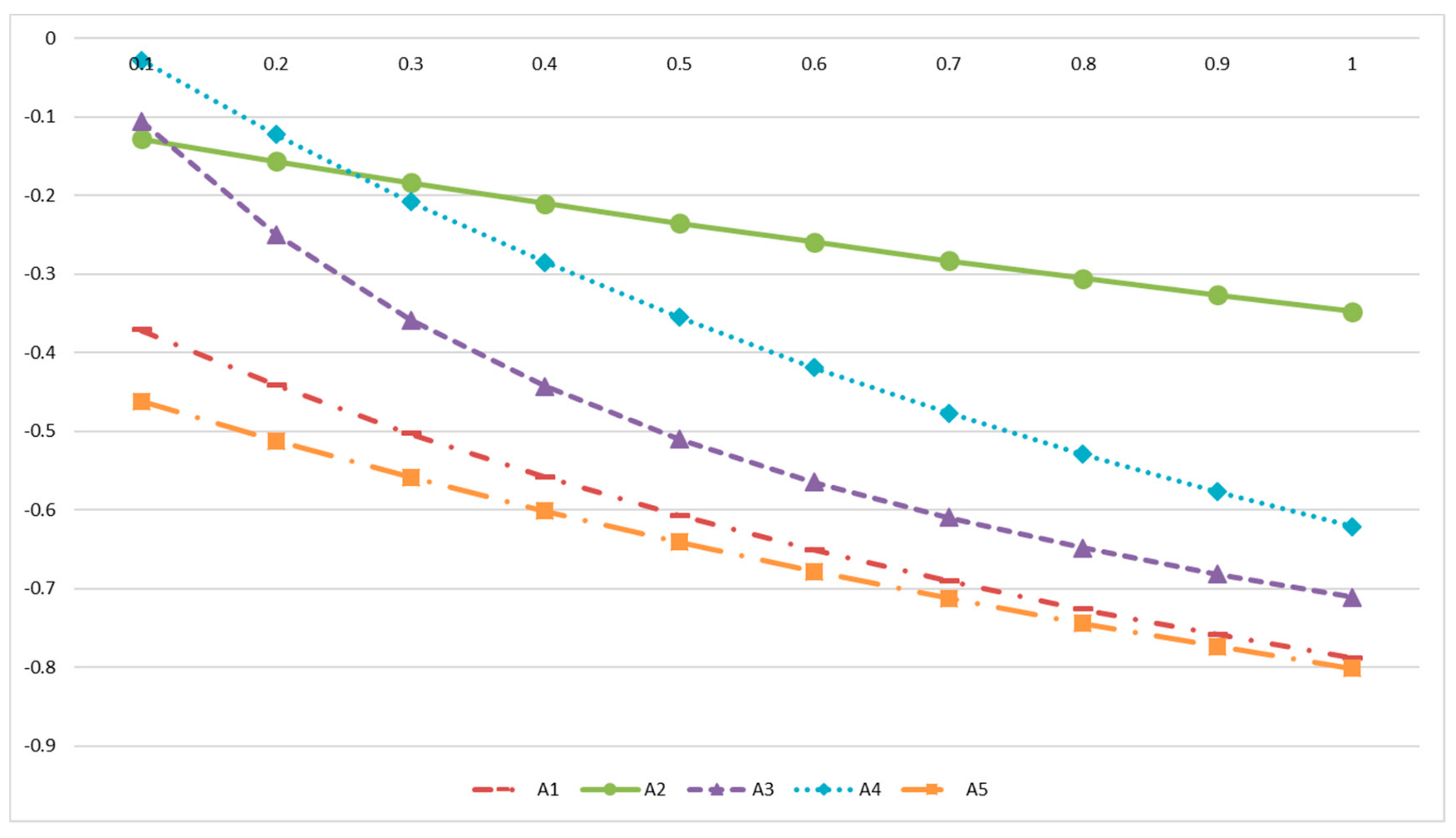In this paper, the optimal EES planning program is selected considering multiple criteria such as investment cost, payback period, net earnings, return on investment and battery lifetime. In fact, some economic criteria of one kind of EES planning program have better performances compared with other kinds of EES planning programs, but other economic criteria have worst performances. Therefore, these economic criteria may be conflicting, which need to be considered for decision-makers to select the optimal EES planning program. The MCDM method is a decision-making method which can consider multiple and conflicting criteria. In this paper, the proposed MCDM method for the optimal EES planning program selection includes entropy weighting approach, BBWM and grey cumulative prospect theory. The BBWM and entropy weighting approach are jointly used to determine the weights of multiple and conflicting criteria, and the grey cumulative prospect theory is utilized to rank the overall performances of EES planning program alternatives. The detailed theories of these three methods are introduced in the followings.
2.1. The BBWM
The BBWM is an extension of BWM, and can consider different preferences and opinions of multiple decision-makers. The BWM was proposed in 2015, and is a new pairwise comparison-based MCDM method. Compared with the popular and widely used pairwise comparison-based MCDM method AHP, which requires
n(
n−1)/2 pairwise comparisons, the BMW only needs 2
n−3 pairwise comparisons, and can thus greatly reduce the number of pairwise comparisons required [
22,
26,
27]. Different from the AHP, the decision-maker only needs to select the best and worst criteria, and then conduct comparisons between them and other criteria in the BWM. This reduced frequency of pairwise comparisons in the BWM compared with the AHP can aid decision-makers in providing more reliable comparisons among different criteria [
28,
29]. The detailed steps of BWM for weighting determination of decision-making criteria are elaborated as follows.
Step 1: Build a decision-making index system containing a set of decision-making criteria. The decision-making index system of the research object firstly needs to be built, including multiple decision-making criteria, embodying the performances of different alternatives from different perspectives. The decision-making index system supposes that are n criteria .
Step 2: Identify the best criterion, represented by , and the worst criterion, represented by , from all the decision-making criteria. In this step, the decision-maker needs to select the best criterion and the worst ctiterion aaccording to his/her preference and judgement. The best criterion is the most significant criterion among all of the criteria, and the worst criterion is the least significant criterion among all of the other criteria in the decision-making index system.
Step 3: Conduct pairwise comparisons between the best criterion and all the criteria in the decision-making index system. The decision-maker calibrates his/her preference and subjective judgement for the best criterion compared with all other criteria in the decision-making index system, which can be expressed by an integer in the interval of [
1,
9]. The larger the integer value, the more important of the best criterion compared to the other criteria. After the decision-maker has conducted the pairwise comparisons between the best criterion selected from the decision-making index system and the other criteria, it is possible to obtain the ‘Best-to-Others’ vector
, which is:
where
stands for the significance of the best criterion
to criterion
.
Step 4: Conduct pairwise comparisons between all the criteria and the worst criterion selected from the decision-making index system. The decision-maker calibrates his/her preferences and subjective judgement for the worst criterion compared with all other criteria in the decision-making index system, which can be expressed by an integer in the interval of [
1,
9]. The larger the integer value, the more important the criterion is compared to the worst criterion. After the decision-maker has conducted the pairwise comparisons between the worst criterion selected from the decision-making index system and all of the other criteria, it is possible to obtain the ‘Others-to-Worst’ vector
, which is:
where
stands for the significance of criterion
to the worst criterion
.
Step 5: Calculate the optimal weights
of all the decision-making criteria. According to the criteria weight determination rule of the BWM, the maximum absolute differences
and
needs to be minimized, namely:
Equation (3) can also be transformed into Equation (4), and then the optimal weights of all the decision-making criteria can be obtained.
Although the BWM has some merits, it can only determine the weights of different decision-making criteria according to the subjective judgement of only one decision-maker, and it cannot consider multiple decision-makers at the same time. If there are several decision-makers giving preferences and judgements, the BWM needs to be used several times, and each time only accounts for one decision-maker. The weights of different decision-making criteria in the case of multiple decision-makers can finally be calculated by using the arithmetic or geometric mean operator methods, which average the different weights of criteria obtained from different decision-makers using the BWM. However, this mean operator method for the case of multiple decision-makers has drawbacks such as outlier sensitivity and restricted information provision [
23]. In fact, the best criteria and worst criteria selected by different decision-makers are usually different, and the pairwise comparisons between two criteria are also different. Therefore, when the BWM is used to determine the weights of different decision-making criteria, considering the fact that there are usually multiple decision-makers, the BWM needs to be extended to the group decision-making environment in consideration of the preferences and judgements of multiple decision-makers at one time. In 2019, a new group MCDM method named Bayesian best-worst method (BBWM) was proposed by researchers Mohammadi and Rezaei, and it can weight different decision-making criteria in the case of multiple decision-makers at the same time without using the mean operator method.
For the detailed computation, the BWM and BBWM have similar inputs, namely the ‘Best-to-Others’ vector and ‘Others-to-Worst’ vector , but the output of the BBWM is more than that of the BWM, and includes not only the optimal aggregated weights of different decision-making criteria that comprehensively consider the preferences and subjective judgements of different decision-makers, but also includes the confidence levels of the weighting results of different criteria.
For the BBWM, there are probabilistic interpretations for the inputs and outputs. From the perspective of probability, the decision-making criterion in the decision-making index system can be treated as a random event, and then the optimal weight of the decision-making criteria weights can be treated as its likelihood of occurrence. Therefore, after the ‘Best-to-Others’ vector
and ‘Others-to-Worst’ vector
are determined, they are implemented as probability distributions with multinomial distribution, and the outputs are also implemented as probability distributions with multinomial distribution [
23]. The probability mass function for the multinomial distribution related to the worst criterion
is:
where
w stands for the probability distribution.
The probability of event
j is proportional to the frequency of the event’s occurrence and the total frequency of trials according to the multinomial distribution, namely:
Then, it can be obtained:
Meanwhile, the best criterion
can also be modeled by employing multinomial distribution. It should be known that the modelling for the best criterion
is different from that of the worst criterion
because the situation is totally the reverse for the pairwise comparisons between the best criterion
and all of the other criteria compared to the worst criterion
with all other criteria, namely:
where / stands for the element-wise division operator.
Then, it can be obtained as:
Therefore, the determination of the weights of all of the decision-making criteria in the BWM is transformed to an estimation of probability distribution. In the BBWM, the statistical inference technique is used for determining w in the multinomial distribution. Currently, the maximum likelihood estimation method is arguably the most popular inference technique, and is employed in the BBWM. Meanwhile, the Dirichlet distribution is used to weight all the decision-making criteria in the Bayesian inference. However, the maximum likelihood estimation inference, including both and , is hard to solve due to its complexity, and the simple Dirichlet–multinomial conjugate fails to encompass both and . Under this consideration, it is necessary to build a Bayesian hierarchical model.
Suppose there are
n criteria evaluated by
k decision-makers using vectors
and
. The optimal weight of the decision-making criteria is represented by
, which can be obtained according to the optimal weights
of decision-making criteria deduced from
k decision-makers.
and
are known in the BBWM, but it is necessary to calculate
and
. The joint probability distribution can be obtained as:
Then, the probability of each individual variable can be calculated by utilizing the following probability rule:
where
x and
y are arbitrary random variables.
For more information on the development of the Bayesian hierarchical model in the BBWM, consult Ref. [
23]. The Markov-chain Monte Carlo method is utilized to determine the posterior distribution of the Bayesian hierarchical model. Compared with the BWM, the optimization problems represented by Equations (3) and (4) are replaced by the probabilistic model in the BBWM. In the meantime, the credal orderings of decision-making criteria weights are also introduced, and interested readers can consult Ref. [
23].









